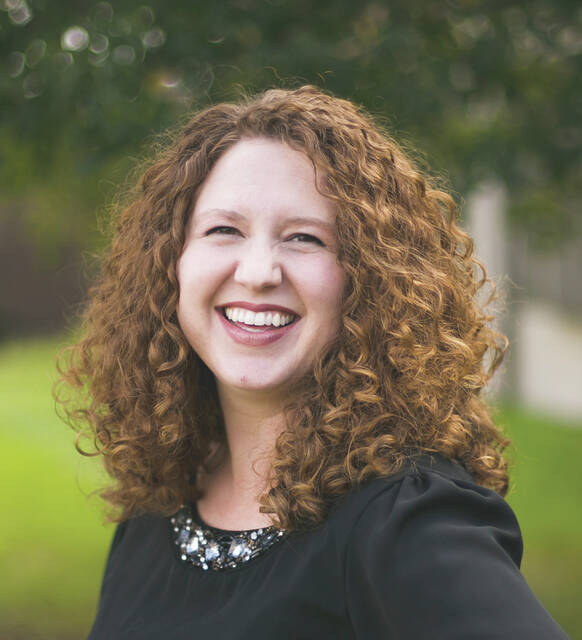
Today, we wrap up the end of Media Literacy Week in the United States. Hosted by the National Association for Media Literacy Education (NAMLE), the mission of the week is to highlight the power of media literacy education and its essential role in education across the country.
This week has been celebrated annually since 2014. This year, U.S. Media Literacy Week celebrated a component of media literacy’s definition each day. NAMLE defines media literacy as, “the ability to Access, Analyze, Evaluate, Create and Act using all forms of communication.” Simply, media literacy empowers people to be critical thinkers and makers, effective communicators and active citizens.
At the Delaware County District Library, our mission also aligns with NAMLE as we seek to serve the public with access to information and technology to encourage curiosity, free inquiry and lifelong learning. Our website’s “Research Resources” provides plenty of opportunities for access to local and international news.
A popular library resource relating to Media Literacy Week is called “Points of View.” In it, learners discover multiple sides of today’s most controversial scientific, social, economic, and political issues. Issues’ backgrounds, points, counterpoints, and critical analysis are all presented with keen attention paid to discovering facts versus opinions.
Outside of library research databases, library staff have also recommended sites like the News Literacy Project, especially for classroom educators. The News Literacy Project is a nonpartisan education nonprofit building a national movement to create a more news-literate America.
The News Literacy Project offers free online lessons on their site Checkology. They have a weekly newsletter for educators called The Sift that rounds up timely examples of misinformation in the media. They also recently launched RumorGuard, a free website to help teach how to recognize misinformation and stop it in its tracks. RumorGuard tracks viral rumors, fact-checks them, and then backs them up with concrete tips to help readers build their news literacy foundation.
If you’d rather have a book in your hand to learn a bit more about media literacy, our staff have created a booklist that patrons can browse by searching the catalog for the list titled “Life Skills: Media Literacy.” The titles listed below have been published within the last two years.
• “Can You Believe It?: How to Spot Fake News and Find the Facts” by Joyce Grant. Everything kids need to know to tell facts from “fake news” on the internet. Here’s a comprehensive guide to how real journalism is made, what “fake news” is and, most importantly, how to spot the difference. It provides practical advice, thought-provoking examples, and loads of explanations, definitions and useful context. Never judgmental, it encourages young people to approach what they find online with skepticism and helps them hone their critical-thinking skills to make good choices about what to believe and share.
• “Science and the Ske?tic: Discerning Fact from Fiction” by Marc Zimmer. A primer on the practice and evaluation of science for teen readers. Using summaries of scientific discoveries to form a narrative, straightforward text describes the tenets of science and the ways in which they are challenged in current public discourse. Included is information on the process of peer review, the rise of internet disinformation, common cognitive biases, the politicization of established facts, and the techniques of scam artists. A final chapter sums up 20 rules to help readers distinguish legitimate research from spurious claims.
• “Media Literacy in Action: Questioning the Media” by Renee Hobbs. Covering topics including the rise of partisan news, algorithms and social media, media addiction, media economics, and media’s influence on identity, this book helps students develop the lifelong skills to navigate an increasingly complex media environment.
• “You Are Here: A Field Guide for Navigating Polarized Speech, Conspiracy Theories, and Our Polluted Media Landscape” by Whitney Phillips. Our media environment is in crisis. Polarization is rampant. Polluted information floods social media. Even our best efforts to help clean up can backfire, sending toxins roaring across the landscape. In “You Are Here,” Whitney Phillips and Ryan Milner offer strategies for navigating increasingly treacherous information flows. Using ecological metaphors, they emphasize how our individual me is entwined within a much larger we, and how everyone fits within an ever-shifting network map.
• “Disinformation and You: Identify Propaganda and Manipulation” by Marie D. Jones. Examining the history of propaganda and disinformation in war, politics, polling, media, entertainment, cults, advertising, science, medicine, today’s media landscape, and even in our personal interactions, “Disinformation and You” helps you spot and counter the seductive and deceptive tactics to influence individual behavior. It provides helpful suggestions and tips for identifying disinformation and fighting back against manipulation and censorship.


